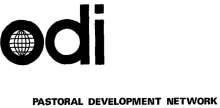Resource information
The present paper is based on a participatory survey carried out in order to establish baseline information on a little known livestock production system and its role in local ecology and economy.The study is based on research in El Kala National Park (North East Algeria).This paper draws attention to some of the problems that arise in understanding the cost and benefit flows in pastoralist systems. These difficulties arise as a result not just of the ecological variability but also as a result of social and political complexities common to the regional contexts of many pastoralist systems.The article finds that:the productivity and efficiency of the system has been seriously underrated, as is frequently the case with pastoraliststhe production system is underpinned by conservation-compatible use of the ‘free services’ of the National Park grazing and water, making livestock production in El Kala a low-cost, high-return enterprisepastoralist land use in the National Park promotes natural vegetation formations and a pleasing ‘natural’ landscape compatible with maintaining wildlife populations, and avoids fencing, clearing and the introduction of exotic species or chemicalsthe environmental benefits of the El Kala livestock system lie in its complementary use of resources essential to wildlife survival and not least in its added justification of their continued maintenancethe pastoralist system operates a flexible and mobile response not merely to patchiness in rangeland conditions but also to patches of political and economic opportunitylivestock here represent a moveable and easily-traded asset as well as an investment that grows at a reasonable rate of return. They provide not only a hedge against inflation but a potential bolthole in times of economic collapsewhile individuals can migrate to work in the towns, they can invest their earnings in livestock. The indications are that when they can no longer find jobs in the weakening urban economy, they can return to the livestock production systempastoralism has has the potential to accommodate fluid urban to rural populations by shifting to and fro along the continuum between milk-based, labour intensive, and largely self-sufficient production, to a more market-oriented, eat-exporting, relatively low-labour enterprise, without much change in external appearances



